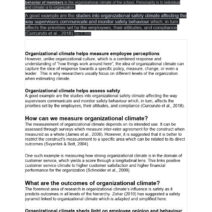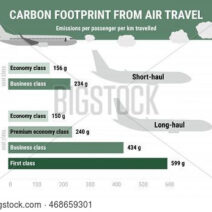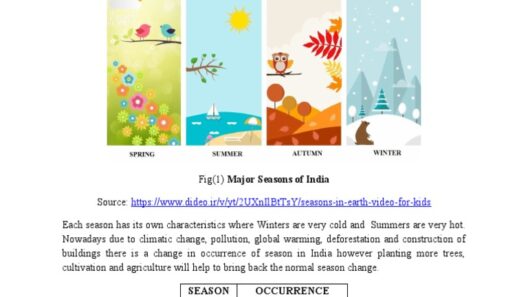The Mediterranean climate, characterized by its warm, dry summers and mild, wet winters, occupies a unique niche within the variety of global climates. This climatic classification is not merely a geographical oddity but an environmental canvas that harbors rich biodiversity and supports human civilization in profound ways. To understand where the Mediterranean climate thrives, one must delve into its geographical distribution and the underlying environmental factors that contribute to its distinctive features.
Primarily, the Mediterranean climate is found in regions that lie between latitudes 30° and 45° in both the Northern and Southern Hemispheres. This dual presence on either side of the equator is a noteworthy aspect of its distribution. Key regions include the Mediterranean Basin, parts of California, central Chile, the Cape Town region of South Africa, and southwestern Australia. Each of these areas showcases the hallmark characteristics of the Mediterranean climate, yet they also reflect local adaptations and variances due to topography and ocean currents.
In the Mediterranean Basin itself, countries such as Spain, Italy, and Greece exhibit vivid seasonal contrasts. The summer months see a deluge of sunshine, where temperatures can soar above 30°C (86°F). This abundance of sunlight plays a crucial role in agricultural practices, enabling the growth of olives, grapes, and citrus fruits, all staple products of this region. Conversely, the winters are markedly cooler, with average temperatures hovering around 10°C (50°F). Rainfall during the winter months replenishes the land, creating a fruitful environment for diverse flora and fauna.
The other regions where the Mediterranean climate exists often mirror these attributes, albeit with unique local influences. For instance, coastlines like those in California benefit from the cooling effects of the Pacific Ocean, which mitigates extreme temperatures and contributes to foggy mornings—conditions that are particularly conducive to the cultivation of vineyards. The Napa Valley and Sonoma regions are prime examples, where the confluence of sun, sea, and stable weather creates a veritable paradise for wine production.
Similarly, in central Chile, the Mediterranean climate can be seen along the coast, fostering a thriving agricultural industry that produces fruits and vegetables destined for global markets. Here, the Andes Mountains play a pivotal role by creating rain shadows, which leads to dry conditions on one side while maintaining verdant landscapes on the other. This topographic nuance enhances the ability of local farmers to yield diverse crops year-round.
Another extraordinary feature of regions with a Mediterranean climate is the presence of unique ecosystems. From the maquis shrubs of the Mediterranean Basin to the fynbos of South Africa, these ecosystems are adapted to the specific conditions dictated by this climate type. They flourish under the stress of seasonal drought and often exhibit remarkable resilience to fire, a characteristic vital for their survival. This adaptability exemplifies the intricate relationship between flora and the climatic conditions they inhabit.
Notably, the climatic stability provided by the Mediterranean regions fosters a particular societal and cultural development that is difficult to replicate elsewhere. Coastal settlements have thrived, buoyed by the trade routes made accessible by the predictable weather patterns. The result is a historical tapestry interwoven with commerce, culture, and community resilience. Villages and cities in these regions are often defined by their close-knit relationships with the land and sea—manifesting not only in cuisine but also in traditions and lifestyles that celebrate the sun-drenched environment.
This sense of place underscored by the Mediterranean climate contributes significantly to its allure. The notion of ‘sun, sea, and stability’ is not mere happenstance. It suggests a deeper attraction that beckons travelers, researchers, and environmentalists alike. The romanticized ideals of leisure and leisurely living associated with Mediterranean locales are underscored by climatic conditions that allow for such lifestyles. Outdoor cafes with sea views flourish, and vineyards flourish under the expanding horizon of the sun, branding the Mediterranean as the zenith of idyllic living.
From a scientific standpoint, the Mediterranean climate is also a subject of fascination due to its implications in the study of climate change and sustainability. The unique characteristics of this climate zone make regions vulnerable to the increasingly harsh impacts of global warming, including prolonged droughts and unpredictable weather patterns. As sea levels rise, coastal areas face the dual threat of erosion and habitat loss. The fruits of the Mediterranean—and indeed the customs surrounding their cultivation—are increasingly at risk, prompting calls for a more profound understanding of the delicate balance required to maintain these lush environments.
Moreover, the sustainability initiatives taking root in Mediterranean climates serve as harbingers for global action. Innovative agricultural methods, conservation efforts, and renewable energy projects are gaining traction as local communities seek to mitigate the adverse impacts of climate change. The Mediterranean, with its wealth of knowledge and adaptive strategies, offers a blueprint for harmonizing human activity with the natural world, emphasizing the importance of resiliency and sustainability.
In conclusion, the allure of the Mediterranean climate extends beyond its geographical boundaries and seasonal weather patterns. It encapsulates a lifestyle, a rich tapestry of cultures, and environmental marvels that have thrived for centuries. Its regions bear not just the climate’s signature warmth and stability but also the weight of responsibility as they navigate the challenges posed by a shifting global climate narrative. Indeed, the Mediterranean climate represents not only where the sun meets the sea but also where humanity grapples with its existential ties to the environment.







